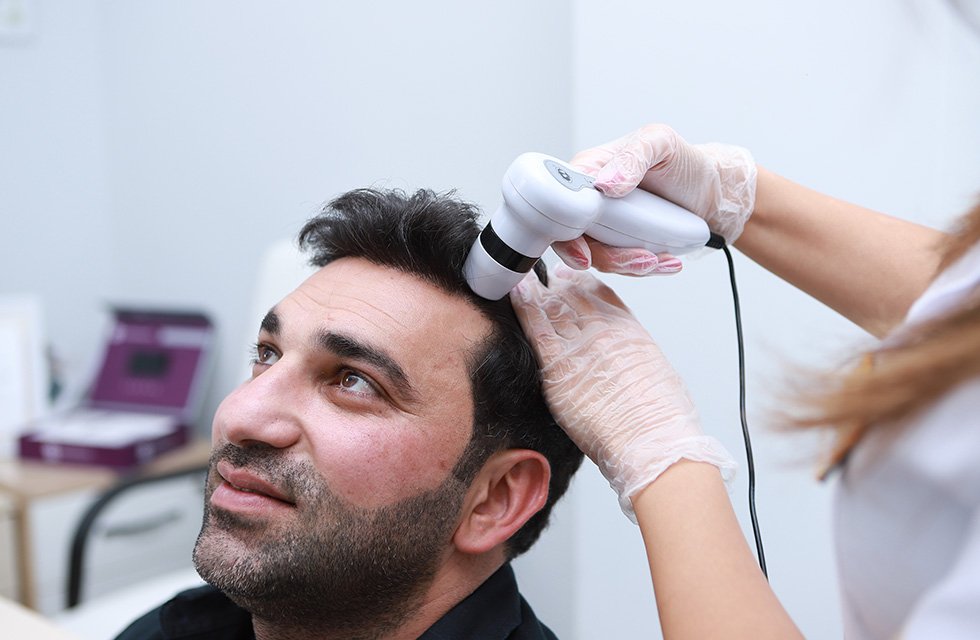Best 1 Hair Transplant Treatment By Dr Bansal Delhi India
Best 1 Hair Transplant Treatment By Dr Bansal Delhi India

- Consultation: The process usually begins with a consultation with a qualified dermatologist or a hair transplant surgeon. During this consultation, the doctor will assess your hair loss pattern, discuss your expectations, and determine if you are a suitable candidate for a hair transplant.
- Pre-operative preparation: Before the surgery, your doctor may recommend certain preparations such as discontinuing blood-thinning medications, avoiding alcohol and smoking, and washing your hair thoroughly.
- Donor area preparation: On the day of the surgery, the donor area (usually the back or sides of the head) is trimmed to expose the hair follicles for extraction.
- Anesthesia: Local anesthesia is administered to numb both the donor and recipient areas to minimize discomfort during the procedure.
- Extraction of hair follicles: There are two primary techniques for hair follicle extraction: Follicular Unit Transplantation (FUT) and Follicular Unit Extraction (FUE). In FUT, a strip of scalp containing hair follicles is surgically removed from the donor area and dissected into individual follicular units. In FUE, individual follicular units are extracted directly from the donor area using a small punch tool.
- Preparation of recipient site: Tiny incisions are made in the recipient area (balding or thinning areas of the scalp) where the hair will be transplanted. The angle, depth, and density of these incisions are crucial for natural-looking results.
- Implantation of hair follicles: The harvested follicular units are carefully implanted into the recipient sites using specialized instruments. The surgeon or technician places the follicles one by one, ensuring proper orientation and distribution for optimal aesthetic results.
- Post-operative care: After the surgery, you will receive instructions on how to care for your transplanted hair, including medication to prevent infection and promote healing. You may experience some discomfort, swelling, or redness in the recipient and donor areas, which typically subsides within a few days to weeks.
- **Follow-up appointments
Hair Diseases In Humans
Hair diseases encompass a range of conditions affecting the hair follicles, scalp, and sometimes the hair shaft itself. Here are some common hair diseases:
Alopecia Areata: This autoimmune disease causes hair loss in patches on the scalp, face, or other areas of the body. It occurs when the immune system mistakenly attacks hair follicles.
Androgenetic Alopecia: Also known as male or female pattern baldness, this condition is the most common cause of hair loss. It’s characterized by a gradual thinning of hair, typically at the crown or temples, due to genetic and hormonal factors.
Telogen Effluvium: This condition causes excessive shedding of hair due to a disturbance in the hair growth cycle. It can be triggered by factors such as stress, illness, hormonal changes, or certain medications.
Trichotillomania: This is a psychological disorder characterized by a recurrent urge to pull out one’s hair, leading to noticeable hair loss. It’s often a coping mechanism for stress or anxiety.
Tinea Capitis: Also known as scalp ringworm, this fungal infection affects the scalp and hair shafts, causing hair breakage, redness, itching, and sometimes bald patches.
Folliculitis: This condition occurs when hair follicles become inflamed, usually due to bacterial or fungal infection. It can cause redness, swelling, itching, and sometimes pustules or crusts around the hair follicles.
Seborrheic Dermatitis: This is a common inflammatory skin condition that affects the scalp and other oily areas of the body. It can cause redness, itching, flaking, and sometimes temporary hair loss.
Hirsutism: This condition involves excessive hair growth in women in a male pattern, such as on the face, chest, or back, due to hormonal imbalances or other underlying medical conditions.
Cicatricial Alopecia: Also known as scarring alopecia, this group of disorders involves permanent hair loss due to inflammation and destruction of hair follicles, resulting in scar tissue formation on the scalp.
Psoriasis: While primarily a skin condition, psoriasis can also affect the scalp, leading to red, scaly patches that may cause temporary hair loss.
These are just a few examples of hair diseases, each with its own causes, symptoms, and treatments. Proper diagnosis by a healthcare professional is essential for effective management of these conditions.
